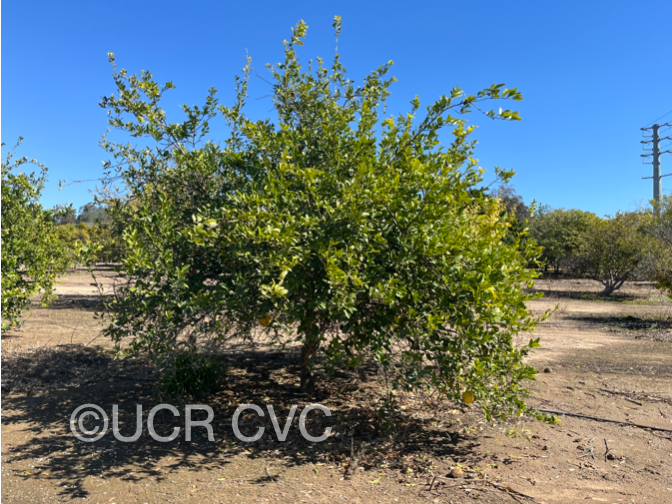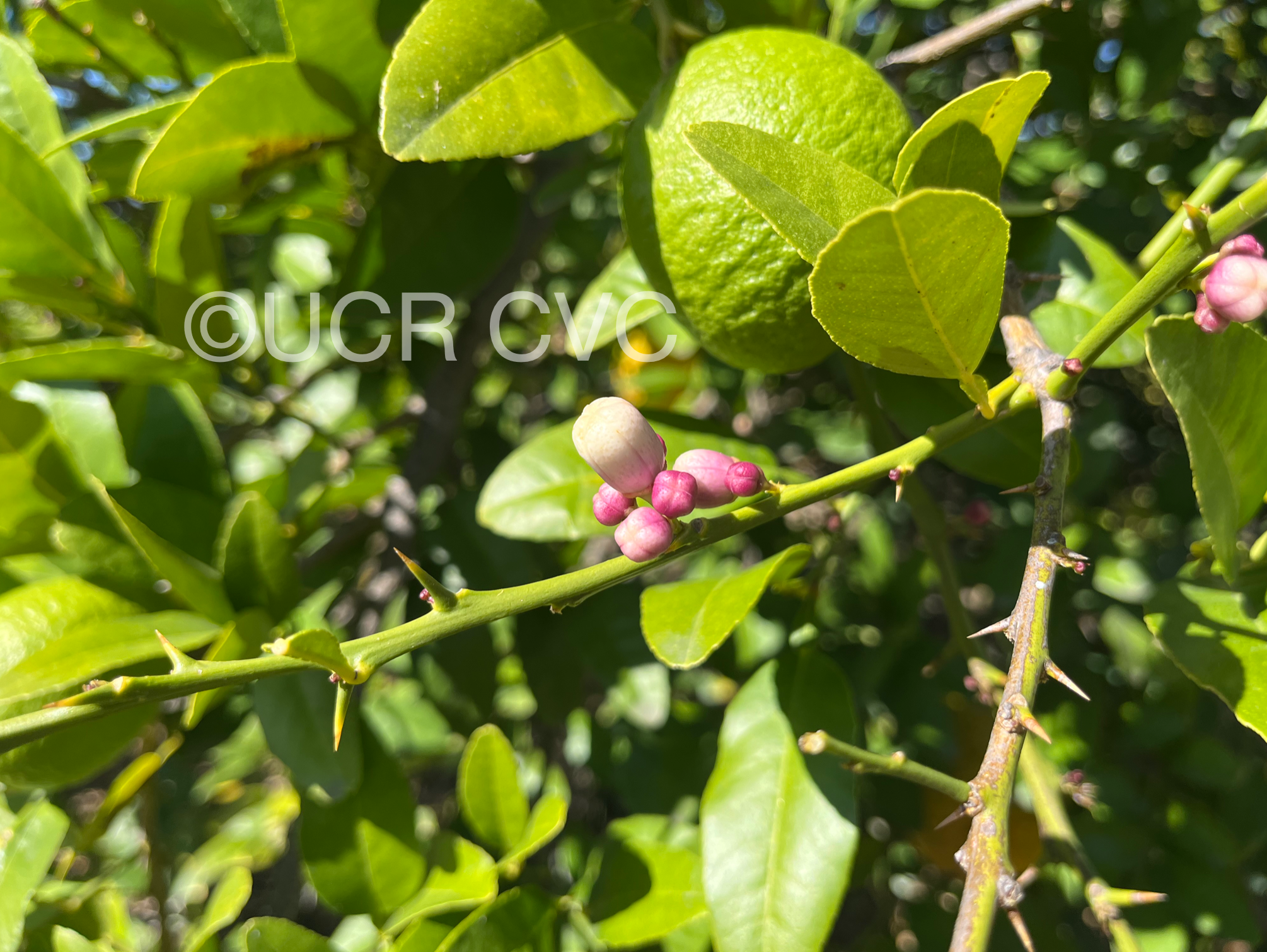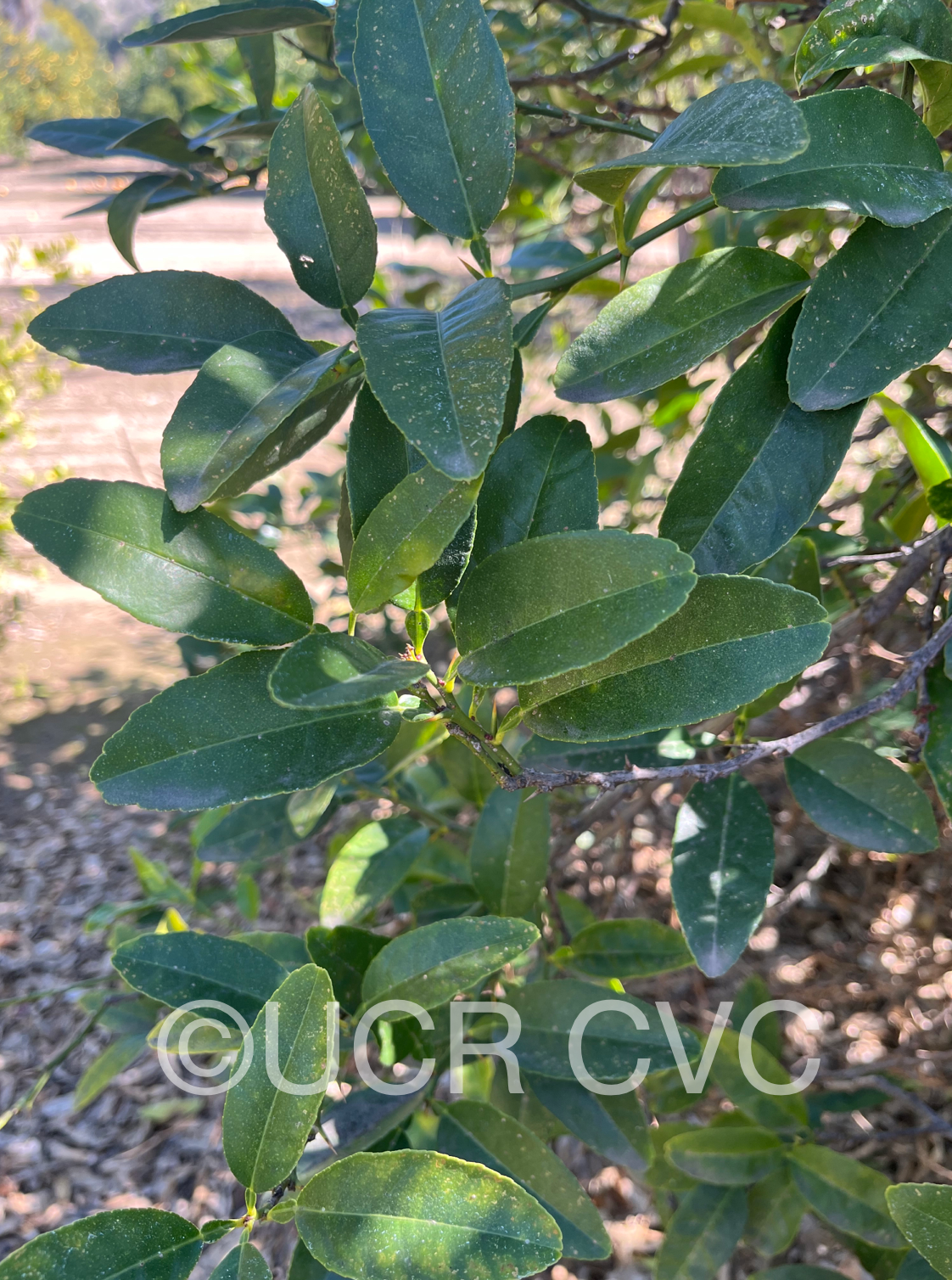Citrus macrophylla Wester
CRC 2446
VI 876
PI 600628
Source:
Received as seed, 1930.
Parentage/origins
Parents unknown.
Rootstocks of accession
Yuma Ponderosa lemon, Carrizo citrange.
Season of ripeness at Riverside
Unknown at this time.
Notes and observations
The original C. macrophylla line was received by the Citrus Variety Collection in the 1930s. This accession was purportedly received by the Citrus Research Center in the 1930s from the Philippine Islands, identified as CPB10049. Specifically noted as 'a wild orange collected by WT Swingle at Mount Maquiling, Los Banos, April 1919' (Siebert & Krueger). Seeds from this original line were used in the Citrus Industry for some time. Willits and Newcomb nursery had saved a seedling tree they had grown from the original Mac line in 1968, and this was introduced by the CCPP as VI 313. Later, the CCPP went back and cleaned up the original Mac line and this became VI 388. CCPP chose to distribute the original line instead, dropping VI 313. The CVC retained both the VI 313 and VI 388 accessions, but the only line being distributed by CCPP was the original Mac line VI 388. About a decade ago some of the nurserymen felt that something was off about VI 388—it didn't look or smell right. After some discussion with nurserymen and researchers, it was decided that the CCPP line VI 388 had possibly mutated. In 2016 CCPP decided to re-introduce Mac again but from their own cultivar bank at the Lindcove Research and Extension Center in Exeter. The Mac at the cultivar bank was always VI 388 and from the original Mac, but this newest introduction of it is now VI 876. The CCPP has discontinued the VI 313 introduction. -TJSW, Feb 2024
Description from The Citrus Industry Vol. 1 (1967)
"Fruit medium-large, oblong to obovate; often with prominent mammilla surrounded by circular furrow; seedy. Rind medium-thick (for size of fruit); surface somewhat rough and bumpy; tightly adherent; color greenish-yellow. Segments numerous (about 15); central axis large and solid. Flesh color greenish-yellow; low in juice; strongly acid and bitter. Seeds polyembryonic.
Tree vigorous, spreading, very thorny (with short stout spines); flowers and new growth strongly purple-tinted. Leaves small to medium, pale green, narrow elliptical, blunt-pointed, and with broadly winged petioles of the pummelo type.
Lemon or lime characters in the alemow are discernible, and there is some suggestion of pummelo. The writer has provisionally placed the alemow in this group, and it is included in this treatment because of its promise as a lemon rootstock in California where the soluble salt and boron content of the soils is unfavorably high for the commonly used rootstocks. Alemow is said to be native to the Island of Cebu, Philippine Islands."
Availability
Available in California through the Citrus Clonal Protection Program. Click here to order budwood.
USDA Germplasm Resources Information Network page for Citrus macrophylla






